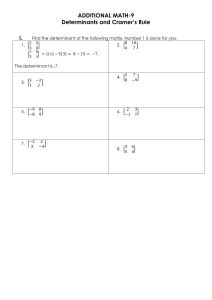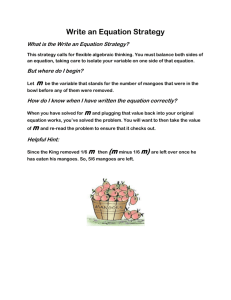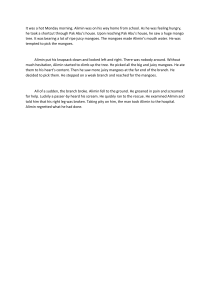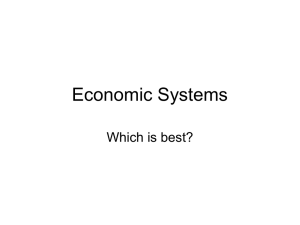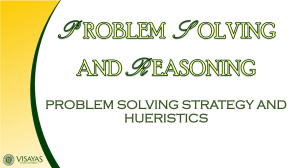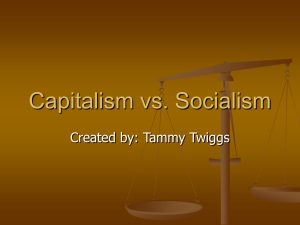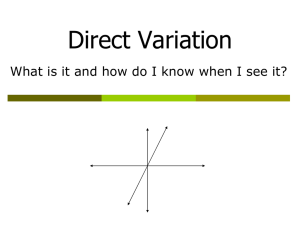Econ 101 Section 4 Quiz # 2 9-07-05 Use the following choices for
advertisement
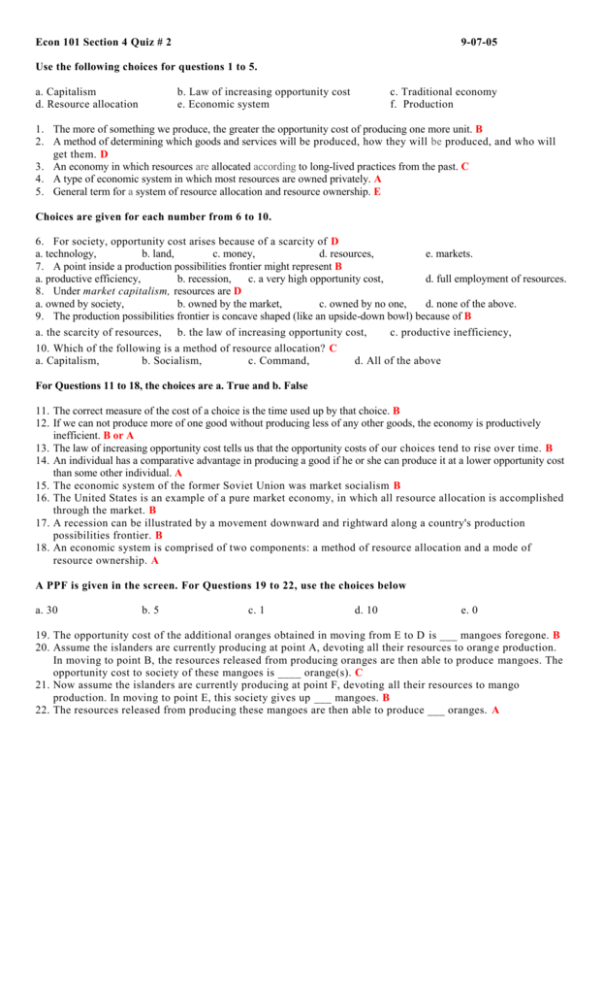
Econ 101 Section 4 Quiz # 2 9-07-05 Use the following choices for questions 1 to 5. a. Capitalism d. Resource allocation b. Law of increasing opportunity cost e. Economic system c. Traditional economy f. Production 1. The more of something we produce, the greater the opportunity cost of producing one more unit. B 2. A method of determining which goods and services will be produced, how they will be produced, and who will get them. D 3. An economy in which resources are allocated according to long-lived practices from the past. C 4. A type of economic system in which most resources are owned privately. A 5. General term for a system of resource allocation and resource ownership. E Choices are given for each number from 6 to 10. 6. For society, opportunity cost arises because of a scarcity of D a. technology, b. land, c. money, d. resources, e. markets. 7. A point inside a production possibilities frontier might represent B a. productive efficiency, b. recession, c. a very high opportunity cost, d. full employment of resources. 8. Under market capitalism, resources are D a. owned by society, b. owned by the market, c. owned by no one, d. none of the above. 9. The production possibilities frontier is concave shaped (like an upside-down bowl) because of B a. the scarcity of resources, b. the law of increasing opportunity cost, c. productive inefficiency, 10. Which of the following is a method of resource allocation? C a. Capitalism, b. Socialism, c. Command, d. All of the above For Questions 11 to 18, the choices are a. True and b. False 11. The correct measure of the cost of a choice is the time used up by that choice. B 12. If we can not produce more of one good without producing less of any other goods, the economy is productively inefficient. B or A 13. The law of increasing opportunity cost tells us that the opportunity costs of our choices tend to rise over time. B 14. An individual has a comparative advantage in producing a good if he or she can produce it at a lower opportunity cost than some other individual. A 15. The economic system of the former Soviet Union was market socialism B 16. The United States is an example of a pure market economy, in which all resource allocation is accomplished through the market. B 17. A recession can be illustrated by a movement downward and rightward along a country's production possibilities frontier. B 18. An economic system is comprised of two components: a method of resource allocation and a mode of resource ownership. A A PPF is given in the screen. For Questions 19 to 22, use the choices below a. 30 b. 5 c. 1 d. 10 e. 0 19. The opportunity cost of the additional oranges obtained in moving from E to D is ___ mangoes foregone. B 20. Assume the islanders are currently producing at point A, devoting all their resources to orang e production. In moving to point B, the resources released from producing oranges are then able to produce mangoes. The opportunity cost to society of these mangoes is ____ orange(s). C 21. Now assume the islanders are currently producing at point F, devoting all their resources to mango production. In moving to point E, this society gives up ___ mangoes. B 22. The resources released from producing these mangoes are then able to produce ___ oranges. A
